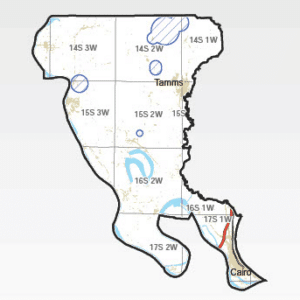What is Mine Subsidence?
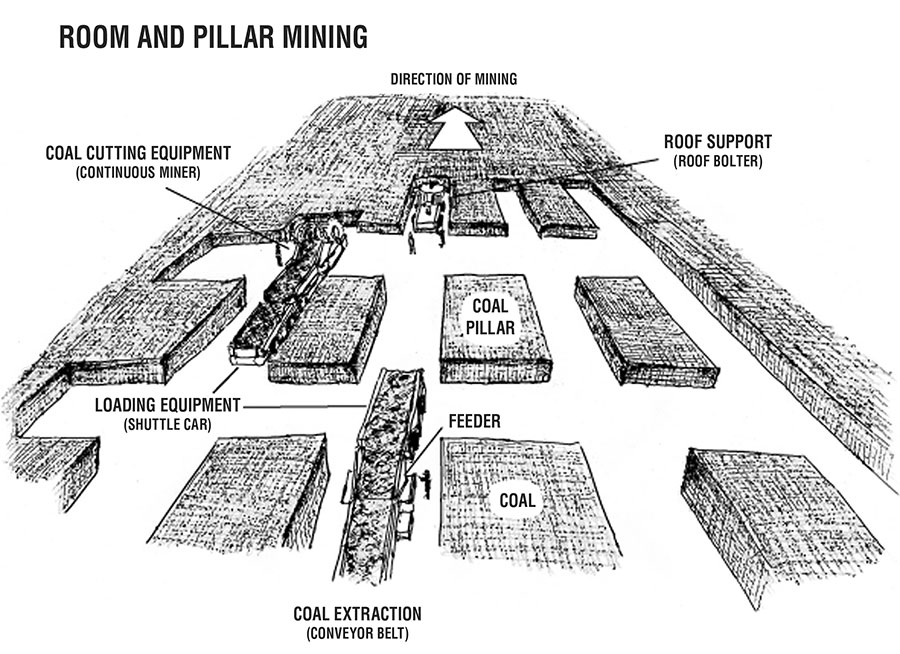
In a commonly used coal mining technique, workers created rooms in a checkerboard or grid pattern, leaving pillars of un-mined coal to support the mine roof and the surface. Over time, perhaps years, decades, or even centuries, there is sinking or shifting of the ground surface resulting from collapse in the underground mine.
The statutory definition of mine subsidence as stated in Article XXXVIIIA of the Illinois Insurance Code is as follows:
“Mine Subsidence” means lateral or vertical ground movement caused by a failure initiated at the mine level, of man made underground mines, including, but not limited to coal mines, clay mines, limestone mines, and fluorspar mines that directly damages residences or commercial buildings.
“Mine Subsidence” does not include lateral or vertical ground movement caused by earthquake, landslide, volcanic eruption, soil conditions, soil erosion, soil freezing and thawing, improperly compacted soil, construction defects, roots of trees and shrubs or collapse of storm and sewer drains and rapid transit tunnels.
In simpler terms, when the roof of a subsurface mine collapses, it causes the ground above to sink or subside.
Most experts agree that room and pillar mines will eventually experience some degree of collapse, but currently there is no way to know when or exactly where mine subsidence will occur.
History of Mining in Illinois
The first discovery of coal in North America was in Illinois by Marquette and Joliet. In 1673, they observed and recorded coal outcrops along the Illinois river. However, it wasn’t until the 1800’s that the settlers first mined outcropped coal for blacksmithing and other domestic uses. It took underground mining a few more years to get started, but by 1848, Belleville became home to the first underground mining operation.
The new industry spread along shipping areas to ease access to large commercial centers like St. Louis and Chicago. However, it wasn’t until the Civil War, when Illinois railroads grew by leaps and bounds, did coal mining in Southern Illinois really take off. The first underground mines were little more than extended tunnels widened into rooms and worked by hand. The miners used a method called “room and pillar.” Using this system, mine workers created openings or “rooms” as they mined. Some coal was left to support the roof; these were called the “pillars”.
While past generations were using mined coal as a fuel source, not much thought went into how this mining would impact future generations. The miners’ goal was to get the coal and get out of the mine. Because there was no urbanization above the mines, they weren’t concerned about the long term stability of the rooms. When the miners were done, they left. But the abandoned mines left behind were not necessarily stable. In fact, mines can fail in many different ways.
The sinking of land surface caused by failure of underground mines is called mine subsidence. The Illinois State Geological Survey estimates that approximately 201,000 acres of urban and built up lands in Illinois are in close proximity to mines. Within that area, there are an estimated 330,000 housing units with possible exposure to mine subsidence.
Because many of the mining companies which operated in Illinois ceased operations long before the mine subsidence occurred, and because property insurance did not cover such damage, property owners who experienced mine subsidence damage prior to 1979 had no recourse. For this reason, special insurance coverage was created specifically to address mine subsidence problems faced by today’s Illinois homeowners.
Today, with changes in energy and environment, it is reasonable to believe that more mining will take place. Although mining operations have changed over the years to methods that mitigate mine subsidence, it is apparent that homeowners will be forced to deal with the consequences of past operations for years to come. Fortunately, through the creation of the Illinois Mine Subsidence Insurance Fund, there is a financial solution for property owners.
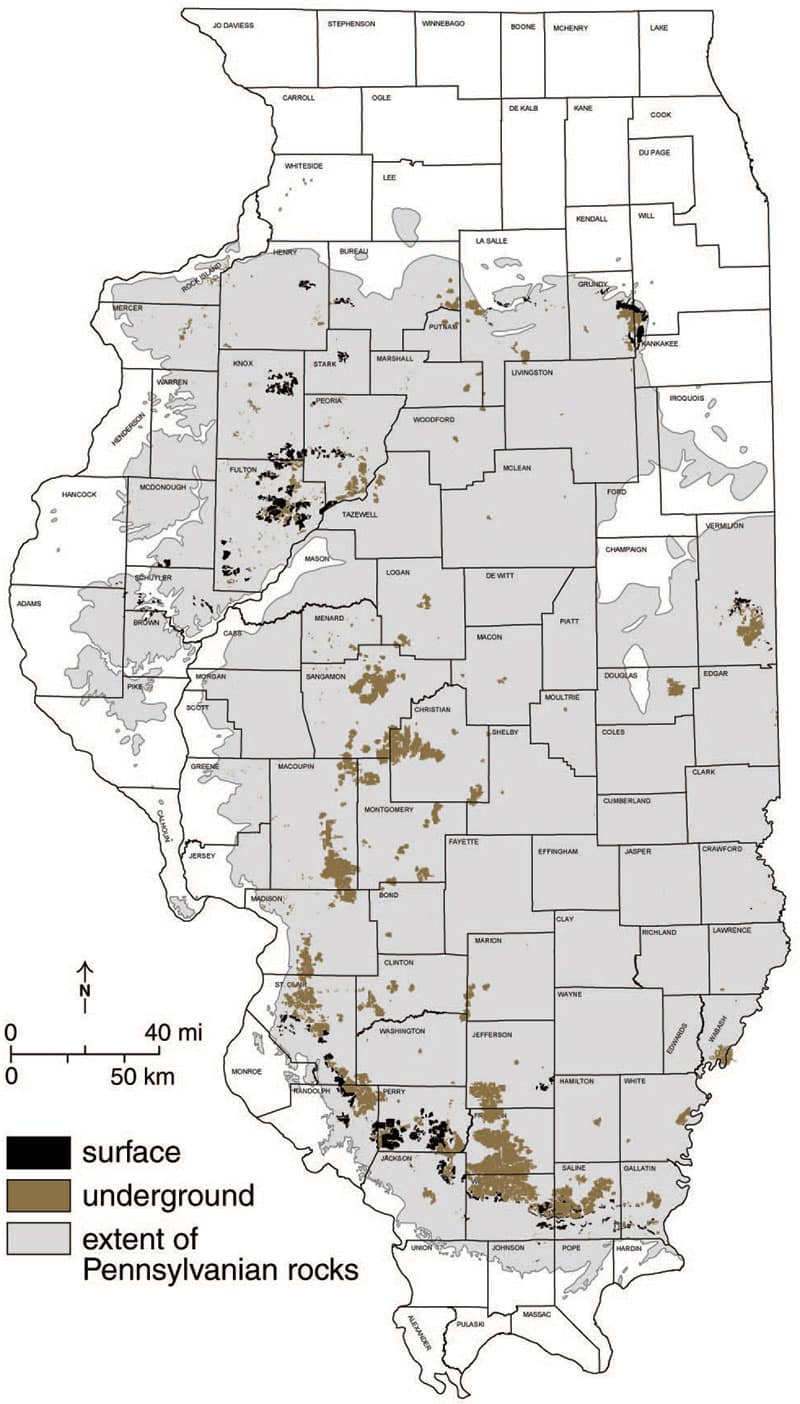
Underground mining has been conducted in at least 72 Illinois counties. In a 2008 study, the Illinois State Geological Survey estimated that approximately 201,000 acres of urban and built-up lands may be in close proximity to underground mines.
Types of Mine Subsidence
Typically in Illinois, mine subsidence will appear in one of two forms: pit or sag. Pit subsidence forms a bell-shaped hole, usually 6-8 feet deep and from 2-40 feet across. The mine will most likely be shallow, less than 100 feet deep, and the bedrock over the mine less than 50 feet thick and consisting of weak rock materials such as shale. Ground movement will be swift and sudden. Sag subsidence, the most common type of mine subsidence, appears as a gentle depression in the ground and can spread over an area as large as several acres. The first signs may appear suddenly within a few hours or days, with gradual movement continuing anywhere from a couple of years to more than a decade. Frequently, damage is subtle, and perhaps dismissed as normal wear and tear until multiple signs appear. Sag subsidence can develop over mines of any depth and are usually caused when coal pillars, left intact by miners to support the mine roof, disintegrate or collapse.
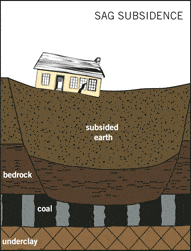
Sag Subsidence
Sag subsidence, the most common type of mine subsidence, appears as a gentle depression in the ground and can spread over an area as large as several acres. Collapse of pillars supporting the mine roof is a typical cause.
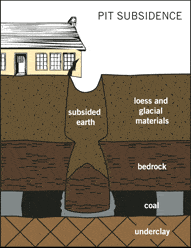
Pit Subsidence
Pit subsidence forms a bell-shaped hole 6-8 feet deep and from 2-40 feet across and occurs when a shallow mine roof collapses.
Detecting Damage
Initial damage to property from mine subsidence may appear suddenly, or develop gradually over time. Many of the conditions listed below may indicate mine subsidence or they may be the result of normal ground movement due to changes in soil moisture or seasonal temperature variations. If you observe one or more of these conditions in your property, and you have mine subsidence insurance, you should report a claim to your insurance agent or company:
If you suspect that your home is being affected by mine subsidence, call your insurance agent or company. Be prepared to tell them the date that you first observed the damage.
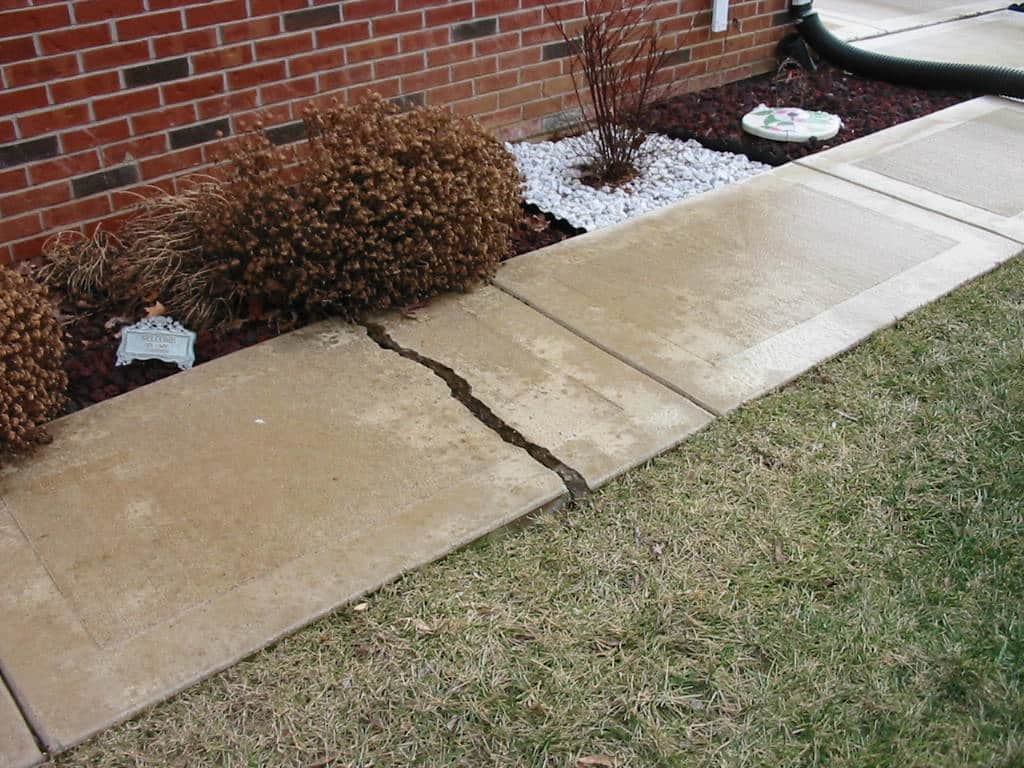
This sidewalk is literally pulled apart by mine subsidence.
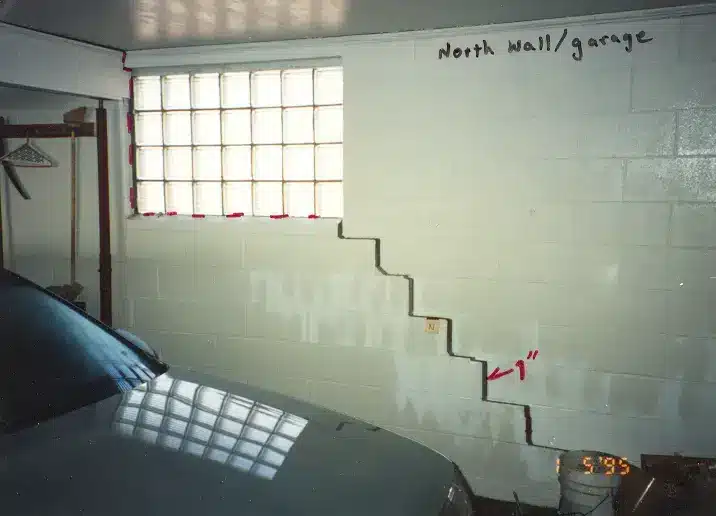
Step cracks, such as these, are not uncommon in block walls affected by mine subsidence.
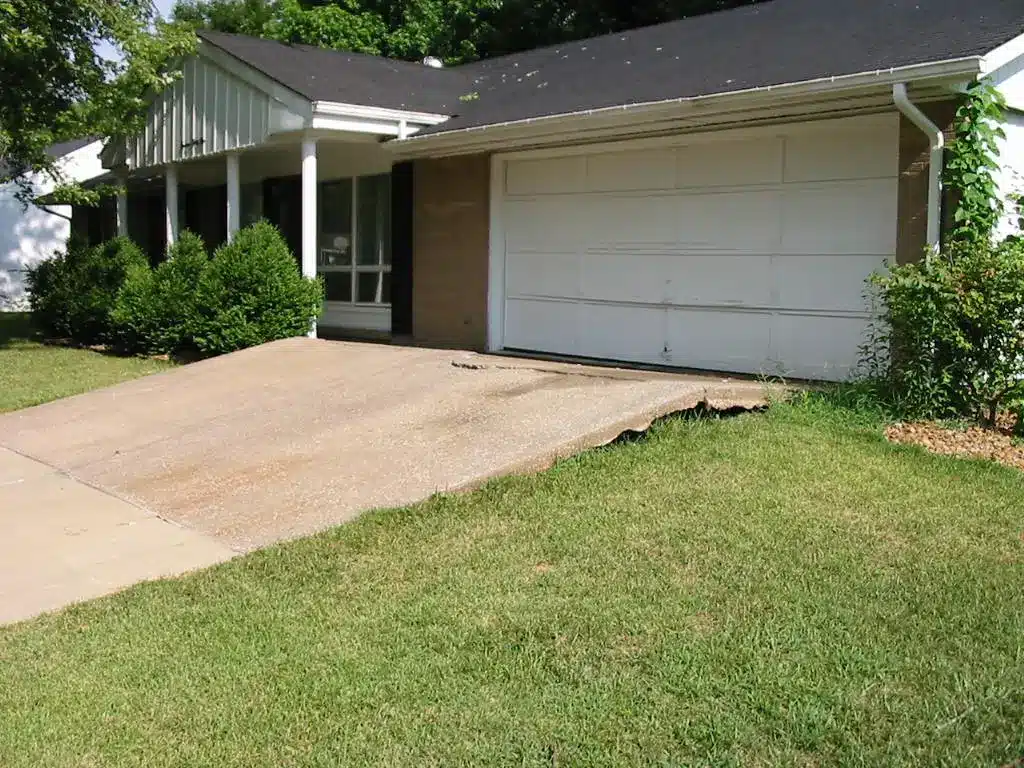
Ground movement from mine subsidence causes this driveway to buckle.
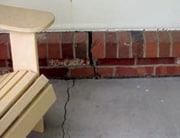
Mine subsidence can cause cracks in pavement or foundations, as shown above.
